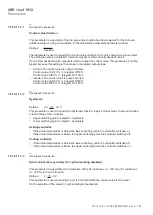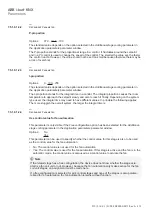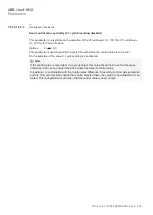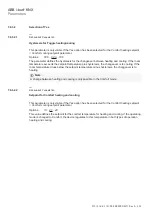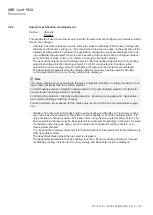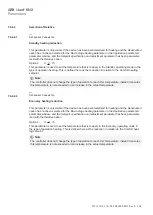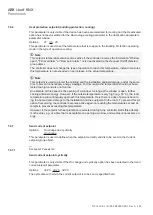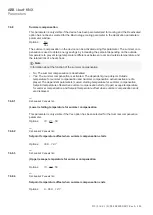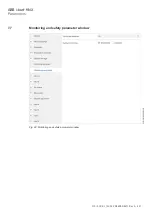
ABB i-bus
®
KNX
Parameters
FCC/S 1.X.X.1 | 2CDC 508 200 D0211 Rev A 220
Explanation of the operating modes:
•
Comfort
: The room is used actively by a person/persons. The setpoint temperature is set corre-
spondingly. In the Comfort mode the controller actively attempts to reach the room temperature
specified (by heating or cooling).
•
Standby
: On a change to Standby, the temperature is allowed to drop (heating) or increase
(cooling) to a specified value.
Only once this temperature is reached is the heating or cooling activated again. Typically the
setpoints are 2-3 °C below/above the Comfort setpoint temperature.
The Standby mode is also used to increase/reduce the room temperature after a nighttime re-
duction (Economy) and expected imminent change to the Comfort mode such that it does not
take too long to reach the Comfort temperatures.
The change between Comfort and Standby can be made using the
Operating mode
group ob-
ject, or, with presence detection in the room, via the
Presence detector (master)
group object.
The reception of the presence value always results in a change to Comfort.
•
Economy
: This is also called nighttime reduction. Here the temperatures are allowed to drop
(heating) or increase (cooling) to a different, lower/higher setpoint. The purpose is to obtain fur-
ther energy savings during extended periods without use (e.g. overnight or during the weekend)
because less energy must be used to maintain this temperature. The setpoints for Economy are
typically 2-3 °C below/above the values for the Standby setpoint temperature.
The change between Comfort and Standby can be made using the
Operating mode
group ob-
ject, or, with presence detection in the room, via the
Presence detector
(master)
group object.
The reception of the presence value always results in a change to Comfort.
7.6.2
Operating mode after bus voltage recovery, ETS download and reset
Options:
Comfort
Standby
Economy
Building Protection
The parameter defines which operating mode is to apply after bus voltage recovery, ETS download
and reset. The operating mode remains active until a new operating mode is set, e.g. via the
Operating mode
group object.
Note
This operating mode should be defined during the planning phase. If the operating mode is de-
fined incorrectly, there may be a loss of comfort or increased energy consumption.




